There are four things that the visitor to Milan should not miss: the magnificent Gothic Duomo in Piazzo del Duomo, the fourth largest church in Europe in the symbolic heart of the city, which was begun in 1386 and continued until the 19th century: La Scala Theatre in Piazza La Scala, the temple of classical music, opera and ballet that attracts music lovers from all over the world and which was rebuilt in its original form immediately after the second world war in which it had been destroyed by bombing: the Pinacoteca di Brera which contains works by major artists including Caravaggio, Mantegna and Raphael; and finally, and to many people the most important, the world’s most famous fresco - The Last Supper by Leonardo da Vinci which was painted on to the refectory wall of the Dominican monastery of Santa Maria delle Grazie.

Leonardo da Vinci: The Last Supper
by Maritravel
One of the world's greatest artistic endeavours, Leonardo's fresco on the walls of the Refectory of the monastery of Santa Maria delle Grazie is surely Milan's greatest treasure.
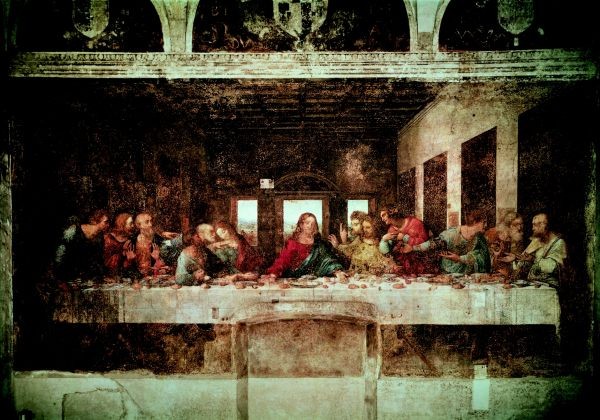 Leonardo da Vinci's The Last Supper (Milan) de Agostini Picture Library (Italian Tourist Board) |
In this article I want just to look at the painting, The Last Supper, painted directly on to the north wall of the convent between 1494 and 1498 during the time of the great art patron, Ludovico Sforza, Duke of Milan. On the opposite wall of the refectory there is another frescp, The Crucifixion by Giovanni Donato da Montorfano, and together with The Last Supper,they signify the final episodes of the Passion of Christ in this room where the monks ate and spent time in prayer.
N.B. The illustrations were photographed outside the refectory in a room displaying copies of the work, as no photography is permitted in the actual room in order to prevent further deterioration of the fresco. They have been enhanced to make the colours more apparent.
Leonardo's Focus on the Apostle's Reactions
Previous paintings of Judas at the last supper had shown him at the moment of his identification but Leonardo, in this fresco, chose to take a radically innovative approach and to represent the moment before the betrayal, the moment when Christ addressed the apostles and said “….. one of you will betray me”.
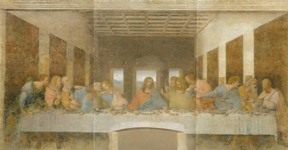
The painter didn't look at the scene as other painters had in the past, instead he focused on the faces of the twelve disciples and on the reactions of shock and astonishment unleashed by the moment, reactions that showed in their faces, their postures and their movements towards and away from the Christ figure.
An additional Leonardo touch is the placement of the fresco which seems to suggest that The Last Supper is taking place in the refectory of the monks with the light from the three windows and from the candle light that would be in the room, accentuating the colour in the painting
Leonardo's Experiments with Materials didn't always work out
But the genius that was Leonardo meant that he was always experimenting with materials and methods of application and in this case it was less than successful. The traditional technique of buon fresco requires very speedy execution as the painter has to work on still damp plaster, but Leonardo tried a technique similar to that used for painting on wood which was ideal for obtaining the “sfumato” blending of tone for which the master was famous, and he used tempura on a dry wall which enabled him to obtain particular effects of colour.
Unfortunately, this choice made the painting extremely fragile and within a few years of the completion of the masterpiece, signs of deterioration were apparent. These became more serious over time.
From the 18th century efforts have been made to restore and preserve the fresco, the last restoration begun in 1979 took 20 years to complete. Thick layers of dirt and materials associated with the previous restoration work were removed and this has allowed a few bright portions from the original to emerge.
Where, When and How to Visit The Last Supper by Leonardo da Vinci
Leaving the refectory, or sometimes on the way into it, you will pass a display of the painting in various stages of its restoration and one where they have restored it with the colours it had when first painted on the walls. I have added one or two photos here with have been enhanced to give an idea of what it might have looked like, but these are still far from the original colours.
What must be said is that even in this state, there is a power in the painting that can keep you sitting for over an hour just looking at it. For me, it’s Milan’s best offering.
Entrance: Piazza Santa Maria delle Grazie, 2, Milan
Opening Hours: Tuesday to Sunday 8.15 a.m. to 7 pm
Closed Mondays and public holidays.
Booking is obligatory to guarantee the conservation of the paintings with entry only allowed for one group every 15 minutes.
Tickets €6.50 (free over 65 and under 18)
You might also like
Suzanne Valadon - "The Blue Chamber"Suzanne Valadon was a Fench circus performer, artist's model, waitress and si...
Understanding The Persistence of Memory by Salvador DaliDali's work was prophetic. Scientists still struggle to explain the concept...
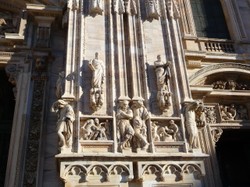

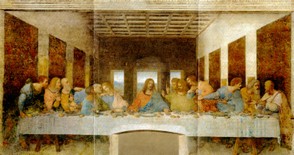
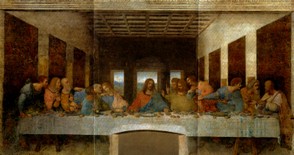

 The Alternative Picture Galleryon 04/20/2016
The Alternative Picture Galleryon 04/20/2016
 ROME - Where the Past Comes to Lifeon 03/26/2016
ROME - Where the Past Comes to Lifeon 03/26/2016
 Only in London - New Unique Guideon 01/25/2016
Only in London - New Unique Guideon 01/25/2016
 Manna, from Sicily, not from Heavenon 01/08/2016
Manna, from Sicily, not from Heavenon 01/08/2016
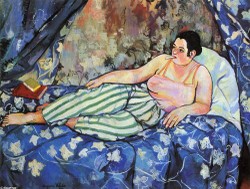
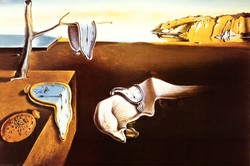
Comments
Thank you for pinning my article to the Catholic board. I hope it pleases those who read it. I was very moved by my experience there just a few weeks ago.
What a great article and so appropriate now that we're in the holy season of Lent. I'm pinning this to a Catholic board.